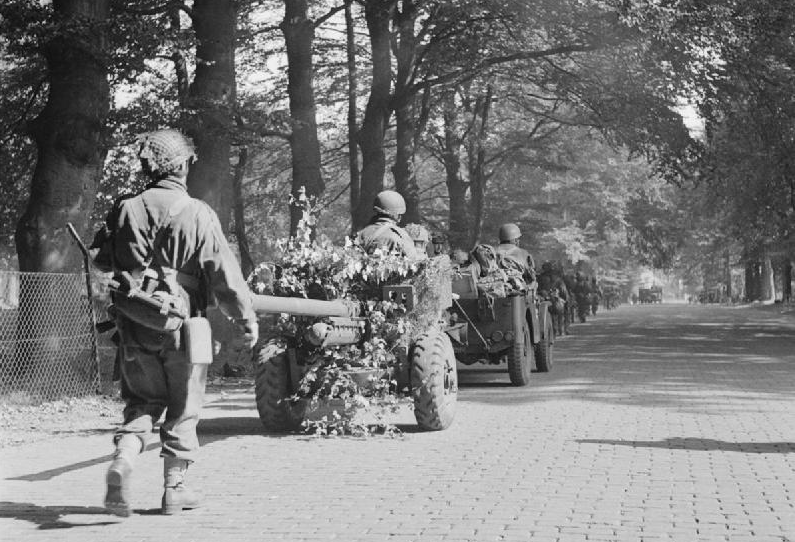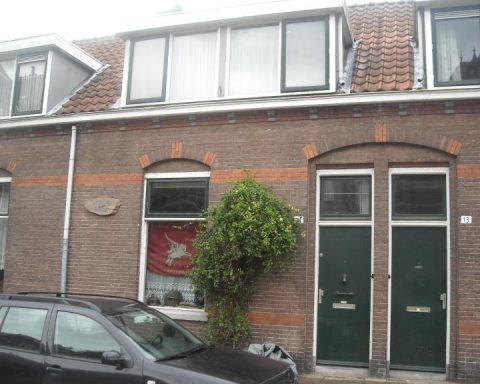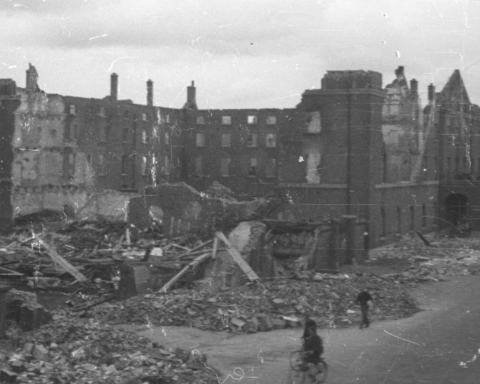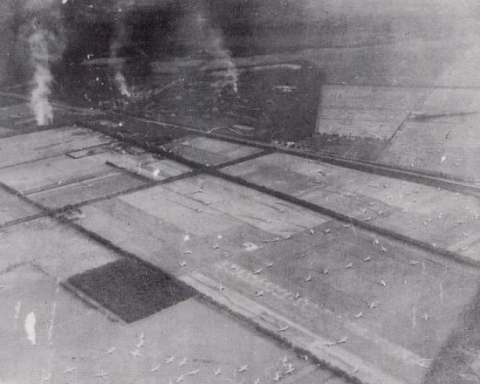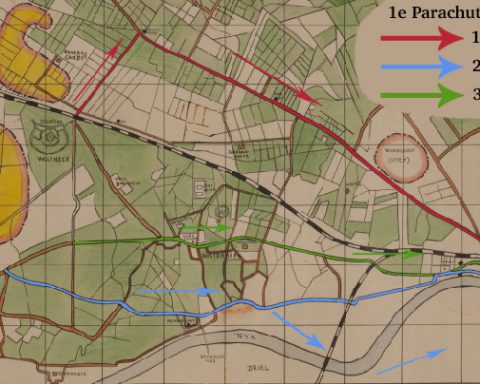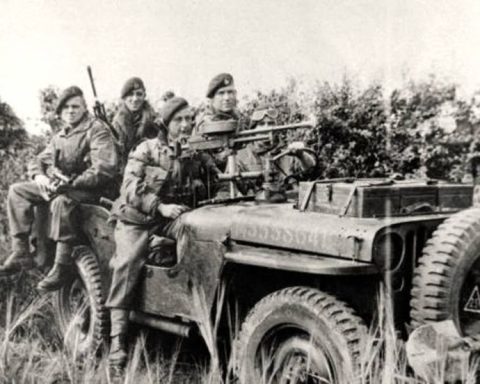Of the three British battalions that marched on Arnhem on Sunday, September 17, only the 2nd Battalion under John Frost had managed to reach the city. The 1st Battalion and the 3rd Battalion had been stopped by German resistance at Oosterbeek. On Monday, September 18, they tried to break through the German barrier line .
Many people think that almost all British paratroopers who landed near Wolfheze on Sunday, September 17, immediately moved in the direction of Arnhem. That is not true. In reality, only a small portion of the approximately 7,000 British who had landed moved to Arnhem.
The glider pilots, headquarters staff and approximately 3,000 paratroopers remained behind in Wolfheze to protect the landing areas where the rest of the division would land on Monday and Tuesday.
Only the three battalions of the 1st Parachute Brigade, together approximately 2,700 soldiers, walked in the direction of Arnhem. According to the British army leadership, Arnhem was defended by “children and old men”. German resistance was not actually expected.
Soon after the landings on Sunday, September 17, it became clear that there were more Germans in the Arnhem region than had been expected. A battalion with 500 SS soldiers, coincidentally in the area, blocked the Utrechtseweg and the Amsterdamseweg between Wolfheze and Oosterbeek. Moreover, in the evening the first reinforcements of the 9th and 10th SS Armored Divisions, which were stationed near Arnhem, soon arrived at Arnhem.
After dark the 1st and 3rd Battalions stopped. In the dark they did not dare to proceed any further in view of the presence of an unknown number of German troops. The 3rd battalion was located approximately at the Hartenstein hotel in Oosterbeek. The 1st Battalion was stuck six kilometers west of Arnhem at the Amsterdamseweg.
Barrier Line
While the British stopped for the night, the Germans did not sit still. During the night of September 17 to 18, they formed a first serious line of defense on the west side of Arnhem to prevent the British from reaching John Frost’s troops at the Rhine Bridge. The advanced German troops that the British had encountered on Sunday, September 17, were withdrawn and incorporated into the line of the improvised ‘Kampfgruppe Spindler’.
This defense line, named after the commander, formed a serious barrier that consisted of a mixed bag of different army units. Luftwaffe soldiers from Deelen airfield, police units, artillery soldiers and well-armed troops from the 9th SS Armored Division.
The Germans were located at Oosterbeek from north to south on both sides of the Amsterdamseweg. From Oosterbeek station, the German troops were positioned from west to east on the north side of the track up to the Heijenoordseweg in Arnhem. To the west of the station, the Germans were also located at the Utrechtseweg and the Onderlangs with the first tanks that had been hurriedly sent from Germany to Arnhem that night.
In the west of Arnhem, the Germans also occupied ‘Den Brink’, the hill where Arnhems Buiten is now located. From this high position the Germans had a good view of the approaching British.
3rd Battalion
In the dark, Colonel Fitch decided to let his 3rd Battalion advance further towards Arnhem at 4:30 am. Because it was suspected that the Utrechtseweg was blocked by the Germans, Fitch chose to march his battalion via the Benedendorpseweg and the Klingelbeekseweg in the direction of Arnhem.
Because the Germans had withdrawn their troops further, Fitch was able to follow the route that 2nd Battalion had followed the day before without any problems. The advance led to the Rhine Pavilion, at the intersection between Bovenover and Onderlangs. There Colonel Fitch discovered that part of his battalion had lost connection. At the Bovenover-Onderlangs intersection he only had B Company, a few Royal Engineers and one anti-tank gun at his disposal.
Somewhere between Oosterbeek and Arnhem the rest of the 3rd Battalion had taken a wrong turn. The mortar section, three anti-tank guns, a machine gun section and A Company were lost.
Colonel Fitch stopped at the Rhine Pavilion in the hope that the rest of his battalion would soon join him. The idea was then that they could push through the last one and a half kilometers to the Rhine bridge without any problems.
It is highly questionable whether Fitch would have managed to break through if he had had more troops with him at that time. German machine guns and 88mm cannons covered the entire Onderlangs from Meinerswijk on the south bank of the Rhine: an open road along the bank of the Rhine without any cover.
At that time, there were several mechanized cannons on the Bovenover that immediately opened fire on the British as soon as a British soldier ventured onto the street.
This created a status quo that lasted almost the entire day. The British remained in the safe cover of the houses and the Germans were happy that the British made no move to advance towards the bridge.

1st Battalion
Fitch had understood via the (defective) radio that the 1st Battalion was approximately one kilometer behind its position at the Bovenover-Onderlangs intersection. The part of 3rd Battalion that had been lost had joined 1st Battalion.
Colonel Dobie of 1st Battalion had initially chosen to advance to Arnhem via the Utrechtseweg, but after several parts of his battalion fought small battles with German units, he eventually opted for the southern route along the Rhine.
The route along the Klingelbeekseweg, where the 3rd Battalion had recently followed the road to Arnhem without any problems, had now been occupied by a strong unit of German troops. There was nothing for 1st Battalion to do but fight through it. The slow advance ran via the Klingelbeekseweg, to the Hulkesteinseweg to the intersection with the Utrechtseweg. Many minor skirmishes took place between British and German forces. There were many casualties on both sides.
There was no question of advancing further to the bridge at that time. Because at about that time the German troops decided to take on the British. Because the Germans advanced, including mechanized guns and other heavy weapons, an unclear situation arose on the British side where the paratroopers were pinned down in Lombok, south of the railway and west of the Elisabeth Gasthuis.
Private Douglas Charlton: “The number of men who could still fight decreased rapidly as we neared the hospital. There were dead people everywhere. Officers and NCOs ran in and out of the houses urging us to move on.”
Private James Shelbourne: “We couldn’t go any further at a high garden wall and I went to take a break in the kitchen of a house there. A group of our boys tried to calm down a crazy sergeant major. His nerves had clearly taken a huge hit. In the garden of the house I got the fright of my life when I saw a German helmet. It was filled to the brim with bright red blood.”
It was at this moment that General Roy Urquhart was forced to flee into a house in the Zwarteweg, opposite the Elisabeth Gasthuis . It was not until the next morning that he was relieved again.
Until midnight the 1st and 3rd Battalions, at least what was left of them, were pinned down in Lombok. British reinforcements appeared around midnight and an ultimate attempt was made to reach the Rhine Bridge in the early morning of Tuesday, September 19. It became a bloodbath.

